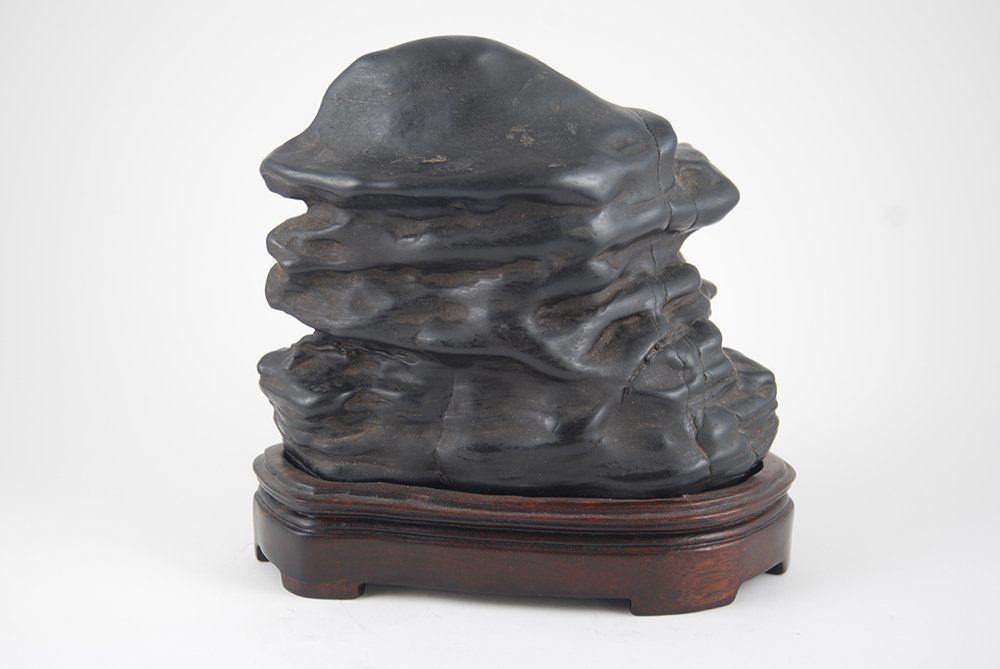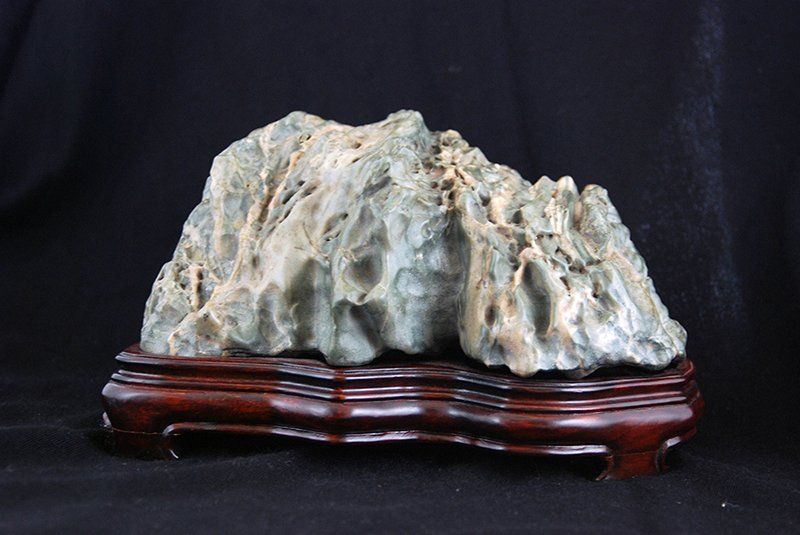Criteria for Evaluating Stones, Part 2A guide to the Criteria for Evaluating a Stone
By Thomas S. Elias , August, 2013
There are many different stone types, approximately 400, used today in Chinese stone appreciation and these are simply too complex and too diverse to have a single set of evaluation criteria that apply to all of these stones. Four main criteria ( shou, lou, tou and zhou ) were developed in the Song dynasty, mainly for Lingbi, Ying Taihu, and Kun stones. In the latter Ming and Qing dynasties, additional criteria were used to evaluate stones. This included the word jiu (旧) for rocks than appeared old as opposed to newly harvested stones. Another word, gu (古) for ancient was sometimes used for stones that were also elegant and appealing. For more information on this subject, see the excellent essay on this subject by Mowry (1997) Worlds Within Worlds.
The basic criteria most often used in modern stone appreciation utilized four primary features—shape ( 形, xing ), material (质, zhi ), color ( 色, se ), and texture (纹, wen ).
Shape is important to a stone being a good viewing stone as opposed to being a good doorstop. A stone should have a pleasing natural shape and not appear artificial or manufactured. Shape varies greatly from the smooth rounded pebbles and boulders taken from gravel pits and fiver beds to the fantastic shapes found in naturally occurring Lingbi and Ying stones. These may resemble mountains as in many Youlan stones; sculpture as in Moore stones, figures as in Gobi Desert and many Lingbi stones. This is obviously subjective, but an extraordinary shaped stone stands out and conveys feeling to the viewer.
Material, referring to the composition of the stone, should feature the degree of hardiness, chemical composition, inclusions, ability to resonate, and translucence. Some of the carbonate stones are relatively soft compared to the heavily siliceous stones such as agates and Yellow Wax. Sedimentary and some metamorphic stones may exhibit a layer effect, particularly when these stones have been subject to heavy weathering or scouring in riverbeds.
Material, referring to the composition of the stone, should feature the degree of hardiness, chemical composition, inclusions, ability to resonate, and translucence. Some of the carbonate stones are relatively soft compared to the heavily siliceous stones such as agates and Yellow Wax. Sedimentary and some metamorphic stones may exhibit a layer effect, particularly when these stones have been subject to heavy weathering or scouring in riverbeds.
Stones vary considerably in color due to the variety, contents, and the environmental conditions to which they have been subject over many years, sometimes millions of years. The wearing or erosion of stones due to tumbling in stream and riverbeds often results in the exposure of fascinating colorful interior colors and patterns. Sedimentary carbonate stones such as limestone are often gray to black, while stones containing iron oxides will appear yellow to brown or even reddish brown depending upon the level of iron. The presence of copper oxides result in green and bluish colored stones and minerals. Traditionally, gray to dark colored stones were preferred, but in the late period of imperial China and in modern times, more colorful stones and more pattern stones have become more fashionable.
The surface texture and surface patterns vary greatly among the vast array of stones collected in China today. Stones with smooth surfaces such as Dahua, Caitao, and Pearl River stones may have a uniform pattern or they may have interesting pattern made of darker components of the stones, particularly in Dahua stones. Many stones have deposits or streaks made from lighter colored calcite, celestine, quartz, or other minerals that contrast sharply with the darker matrix stones. These result in fascinating patterns that might resemble plants, figures, landscape scenes, and even abstractions. Yellow and Long River stones are good examples.
Surface patterns also include rough and wrinkled surfaces, channels, indentations, and other changes in the topography of the surface of the stones. Nine-Dragon River stones often have wrinkled surfaces. Ying and Lingbi stones are good examples having channels, indentations, and other interesting surface patterns.
These four features-shape, material, color, and texture are by far the most widely used criteria in China today. In modern stone markets, the presence or absence of any of these feature will determine the value and subsequent price of the stone. If you are looking at stones in antique shops, the emphasis will be more on the traditional features of shou, tou, lou , and zhou . Regardless, collectors can still acquire nice quality stones by applying the criteria, modern or traditional, to the stones before you make a purchase.





